 |
 |
 |
| |
Sangamo BioSciences announces presentation of clinical Data Demonstrating Functional Control of Viremia in HIV-Infected Subjects treated with SB-728-T
|
| |
| |
(poster pics below; slide presentation in separate report)
Sustained Reduction of Viral Load at or Below Limit of Detection during Treatment Interruption of Antiretroviral Therapy
Additional Presentation Demonstrates Notable Depletion of HIV Reservoir
RICHMOND, Calif., Sept. 12, 2013 -- Sangamo BioSciences, Inc. (Nasdaq: SGMO) announced today the presentation of new data from its ongoing Phase 2 clinical trial (SB-728-902 Cohort 5) to evaluate a single infusion of Sangamo's novel ZFP Therapeutic®, SB-728-T, for the treatment of HIV/AIDS. The data demonstrate functional control of the virus at or below the limit of detection in CCR5 delta-32 heterozygote HIV-infected subjects treated with SB-728-T. The abstract was selected as a "late-breaker" presentation at the 53rd Interscience Conference on Antimicrobial Agents and Chemotherapy (ICAAC). On Wednesday, September 11, data were also presented demonstrating depletion of the HIV viral reservoir in SB-728-T treated subjects in cohorts 1-3 of the SB-728-902 study.
Data from the late-breaking presentation demonstrate that viral load (VL) became undetectable during a treatment interruption (TI) from antiretroviral therapy (ART) in three of seven evaluable CCR5 delta-32 heterozygote HIV-infected subjects, including two of six subjects that had completed TI in the ongoing SB-728-902 Cohort 5 study and an additional subject from an earlier Phase 1 clinical trial of SB-728-T. In one SB-728-902 Cohort 5 subject, VL has remained undetectable (at or below the limits of quantification (LOQ) of the current ultra-sensitive assays for HIV) for seven weeks (to last measurement taken) and the TI is ongoing. Reduction in VL from peak during TI showed a statistically significant correlation (p=0.015) with estimated numbers of engrafted ZFN modified cells (SB-728-T) in which both copies of the CCR5 gene had been disrupted (biallelic modification), in line with previously presented data from this program.
"The data presented today demonstrate that a single infusion of SB-728-T can lead to profound suppression of viral load in the blood and sustained functional control of the virus," stated Dale Ando, M.D., Sangamo's vice president of therapeutic development and chief medical officer. "This is the first evidence that sustained functional control of HIV in the absence of ART is possible. The fact that three of the seven evaluable CCR5 delta-32 subjects achieved undetectable levels is a major step toward immunological functional control of HIV. We look forward to following these Cohort 5 subjects and presenting a complete data set from this study by the end of the year."
In a presentation on September 11, 2013 entitled "Host Immune Environment Significantly Impact the Level of CD4 Reconstitution and the Effects on Latent Reservoir in HIV Subjects Receiving ZFN CCR5 Modified CD4 T-cells (SB-728-T)," data were presented that demonstrated that treatment of HIV infected subjects with SB-728-T leads to a long term increase in CD4 counts. The effect on total CD4 counts in SB-728-T-treated subjects was significantly greater than those observed in previously published T-cell infusion studies without CCR5 modification and correlated with increased CD4 central memory and increased CCR5-disrupted central memory cells. In addition, a median 0.6 log reduction decrease in the size of the HIV reservoir at twelve months was observed, as demonstrated by measurement of HIV total DNA in peripheral blood mononuclear cells (PBMCs). The decrease in reservoir showed a statistically significant correlation with the improvement in CD4 count. Finally, data were presented describing possible predictors of robust CD4 T-cell reconstitution and immunological response post SB-728-T infusion.
"These data are extremely important and suggest that an immunological approach to control of HIV infection is obtainable," commented Rafick-Pierre Sekaly, Ph.D., Co-Director & Chief Scientific Officer of the Vaccine & Gene Therapy Institute of Florida (VGTI Florida), and a collaborator on the study. "SB-728-T treatment results in an unprecedented and durable increase in CD4+ cells primarily due to the expansion of central memory cells - CD4+ T-cell types that are vital for the successful reconstitution of the immune system in HIV-infected individuals. This enables functional control of virus and effects on the latent reservoir of HIV-infected cells that cannot be cleared by ART."
Central and transitional memory T-cells remember previously encountered foreign invaders, such as viruses or bacteria. These cells can survive in the body for the individual's lifetime and reactivate when they re-encounter the same antigen. On reactivation they produce a faster and stronger immune response than the previous encounter. SB-728-T seems to both expand the total memory pool and, by CCR5 modification, protect a proportion of that pool from HIV entry, suggesting that SB-728-T treatment has the potential to durably reconstitute and protect an effective immune system in HIV-infected individuals.
"We are amassing a body of data suggesting that SB-728-T treatment can potentially enable attacks on HIV infection from several angles," said Geoff Nichol, M.B., Ch.B., Sangamo's executive vice president of research and development. "Our aim is to provide a protected reservoir of immune memory cells to replenish the cells killed by HIV and to generate an effective immune response against the virus and opportunistic infections. Some HIV-infected individuals, so-called 'elite controllers,' can accomplish this without drug intervention. These individuals typically have low CCR5 expression and good anti-viral CD8 responses, a characteristic shared by those SB-728-T treated subjects in which we have to date seen the greatest effects on the virus. We have demonstrated that SB-728-T treatment results in a durable increase in total CD4 T-cells and, in these presentations, an effect on controlling the acute rebound in viral load off ART, and a longer term effect on the viral reservoir, a source of HIV which is not addressed by current anti-retroviral therapies. The data will be used to optimize the development of this therapy as a functional cure for HIV."
Dr. Nichol added, "In addition to our SB-728-902 Cohort 5 study, we have a second ongoing trial (SB-1101) designed to maximize the engraftment of SB-728-T in subjects who are not CCR5 delta-32 heterozygotes and who represent the vast majority of HIV-infected individuals. Maximizing circulating SB-728-T is important, as viral control appears related to the extent of engraftment. This trial is evaluating escalating doses of a preconditioning drug, cyclophosphamide (Cytoxan®), which is used to transiently reduce the numbers of T-cells in the body. The cells rapidly repopulate once the drug is discontinued, an effect that can enhance engraftment of concurrently administered exogenous T-cells such as SB-728-T. We intend to present data from all dose-escalation cohorts in these studies before the end of 2013."
About SB-728-T
Sangamo's drug, SB-728-T, is generated by ZFN-mediated modification of the gene encoding the CCR5 receptor in a patient's own T-cells. ZFN modification disrupts the expression of this key co-receptor for HIV entry and renders cells resistant to HIV infection. The approach is based on the observation that a naturally occurring mutation in the CCR5 gene, CCR5 delta-32, provides protection from HIV infection. Individuals in whom both copies of the CCR5 gene carry the delta-32 mutation are generally not susceptible to the most common strain of HIV.
Summary of Clinical Trial Design
About SB-728-902 Cohorts 1-3
The study is an open-label Phase 1 clinical trial to evaluate the safety and tolerability of single infusions of an escalating dose of an autologous (a patient's own) CD4+ T-cell product genetically modified at the CCR5 gene by CCR5-specific ZFNs (SB-728-T). The trial enrolled nine HIV-infected subjects (three cohorts of three subjects each) who have sub-optimal T-cell levels and no detectable viral load on long-term ART. Subjects remained on their existing antiviral therapy while receiving treatment with SB-728-T.
About SB-728-902 Cohort5
Up to 20 HIV-infected subjects heterozygous for the CCR5 delta-32 mutation (i.e. with one CCR5 gene that is naturally modified) who are currently on ART are being enrolled and will receive a single intravenous infusion of SB-728-T (5 to 30 billion modified cells). Two months after SB-728-T treatment, subjects undergo a 16 week TI during which time their ART is discontinued. ART will be reinstituted in subjects whose CD4 T-cell counts drop to < 350 cells/ mm3 and/or whose HIV-RNA increases to > 100,000 /mL for three consecutive weekly measurements. At the end of the TI, subjects with a sustained detectable HIV viral load are reinstituted on ART. Subjects with an undetectable viral load can remain off ART until HIV RNA levels are detectable or their CD4 T-cell count drops below 350 cell/mm3 for three consecutive weekly measurements.
A total of ten subjects have been treated in this cohort.
Of the six evaluable subjects, we observed two subjects in which their VL became undetectable during TI from ART:
· In one subject, VL suppression at, or below, the limit of quantification (LOQ) of virus was sustained from week 11 - 19 of TI and the TI is ongoing.
· In the second subject there was a transient suppression of VL at or below LOQ. The subject remains off ART.
A third subject completed the TI with 1-log decrease in VL from peak.
In three subjects, there was no reduction in VL during the TI, one completed the TI and in two the TI was terminated early due to their viral loads exceeding the upper limit allowed in the protocol.
A seventh subject has not completed TI and is still being evaluated.
The non-employee authors of these abstracts have no financial relationship with Sangamo.
About Sangamo
Sangamo BioSciences, Inc. is focused on research and development of novel DNA-binding proteins for therapeutic gene regulation and genome editing. The Company has ongoing Phase 2 and Phase 1/2 clinical trials to evaluate the safety and efficacy of a novel ZFP Therapeutic® for the treatment of HIV/AIDS. Sangamo's other therapeutic programs are focused on monogenic diseases, including hemophilia and hemoglobinopathies such as sickle cell anemia and beta-thalassemia, and a program in Huntington's disease. Sangamo's core competencies enable the engineering of a class of DNA-binding proteins known as zinc finger DNA-binding proteins (ZFPs). Engineering of ZFPs that recognize a specific DNA sequence enables the creation of sequence-specific ZFP Nucleases (ZFNs) for gene modification and ZFP transcription factors (ZFP TFs) that can control gene expression and, consequently, cell function. Sangamo has entered into a strategic collaboration with Shire AG to develop therapeutics for hemophilia, Huntington's disease and other monogenic diseases, and it has also established strategic partnerships with companies in non-therapeutic applications of its technology including Dow AgroSciences and Sigma-Aldrich Corporation. For more information about Sangamo, visit the company's website at www.sangamo.com.
ZFP Therapeutic® is a registered trademark of Sangamo BioSciences, Inc.
This press release may contain forward-looking statements based on Sangamo's current expectations. These forward-looking statements include, without limitation, references relating to research and development of novel ZFP TFs and ZFNs and therapeutic applications of Sangamo's ZFP technology platform for the treatment of HIV/AIDS, including a potential functional cure for HIV/AIDS, the ability of a ZFP Therapeutic to control HIV infection, projected timing of release of SB-728-T clinical data, the expansion of clinical studies for HIV-infected individuals and the initiation of additional preclinical studies of ZFN-gene modification. Actual results may differ materially from these forward-looking statements due to a number of factors, including uncertainties relating to the initiation and completion of stages of our clinical trials, whether the clinical trials will validate and support the tolerability and efficacy of ZFNs, technological challenges, Sangamo's ability to develop commercially viable products and technological developments by our competitors. For a more detailed discussion of these and other risks, please see Sangamo's public filings with the Securities and Exchange Commission, including the risk factors described in its Annual Report on Form 10-K and its most recent Quarterly Report on Form 10-Q. Sangamo assumes no obligation to update the forward-looking information contained in this press release.
SOURCE Sangamo BioSciences, Inc.
---------------------
POSTER
Host Immune Environment Significantly Impact the Level of CD4 Reconstitution and the Effects on Latent Reservoir in HIV Subjects Receiving ZFN CCR5 Modified CD4 T-cells (SB-728-T)
Reported by Jules Levin
ICAAC 2013 Sept 10-13 Denver , Colorado
J. Zeidan1, G. Lee2, J. Lalezari3, R. Mitsuyasu4, S. Wang2, M. Giedlin2, W. Tang2, G. Nichol2, D. Ando2, R-P. Sekaly1;
1VGTI, Port St. Lucie, FL, 2Sangamo BioSci., Richmond, CA, 3Quest Clin. Res., San Francisco, CA, 4UCL


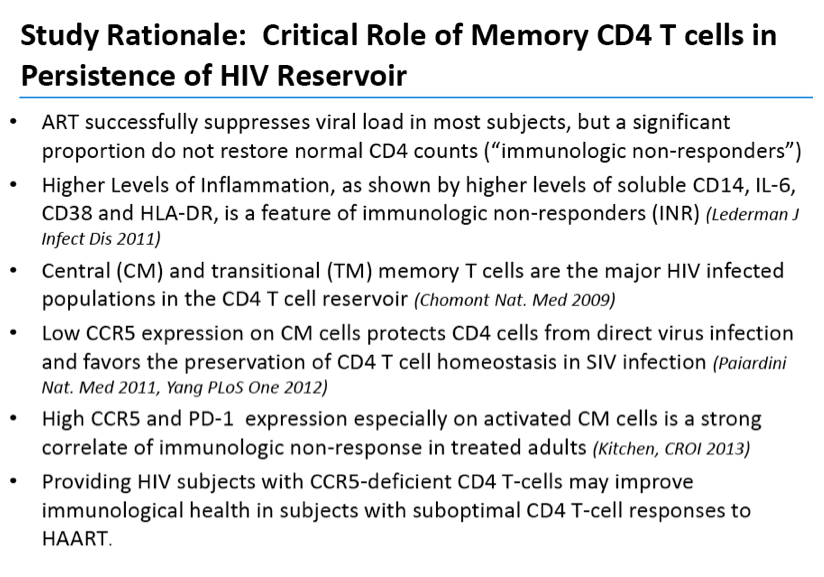
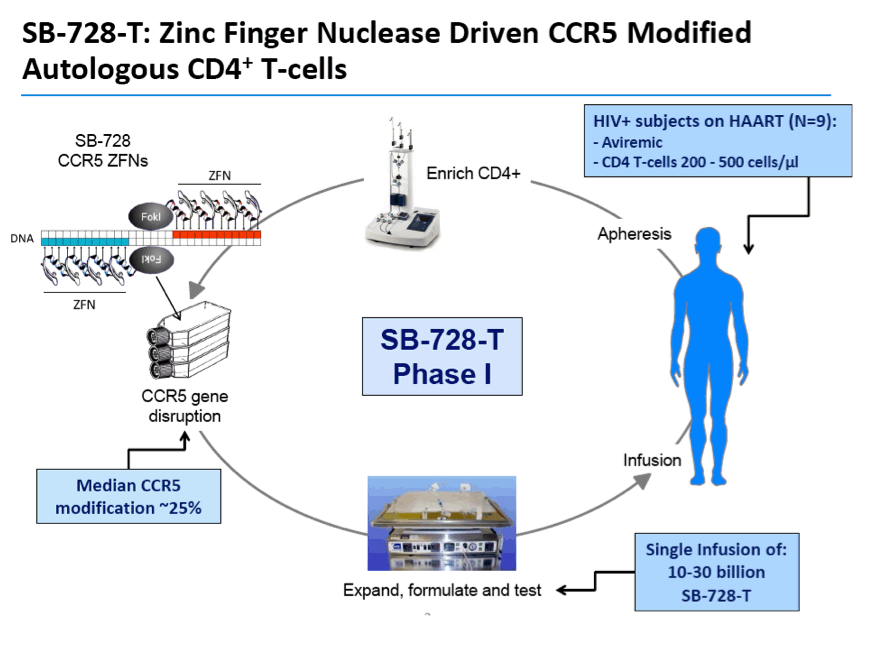
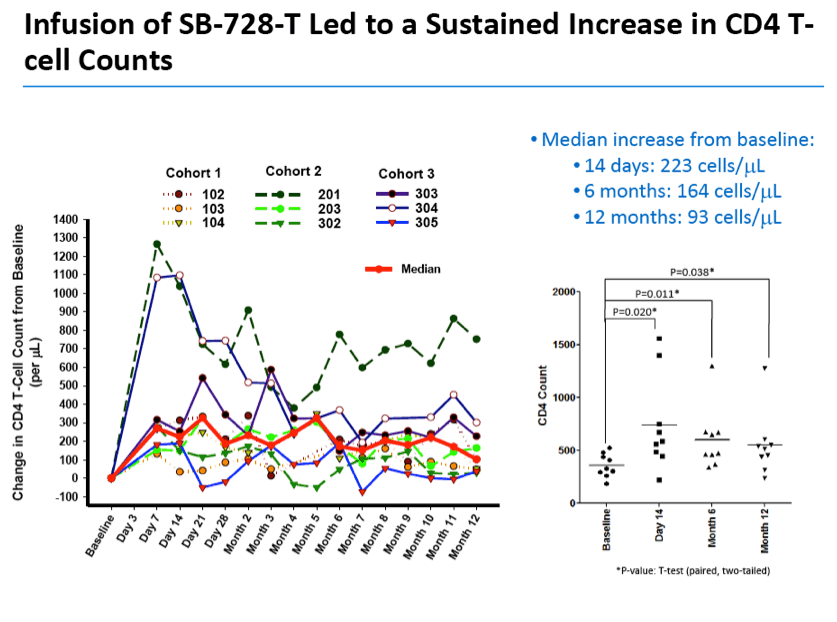
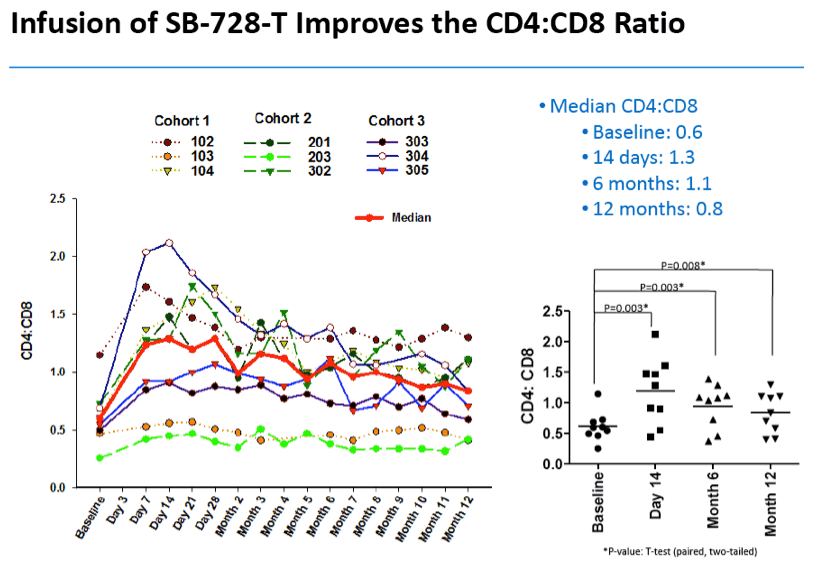
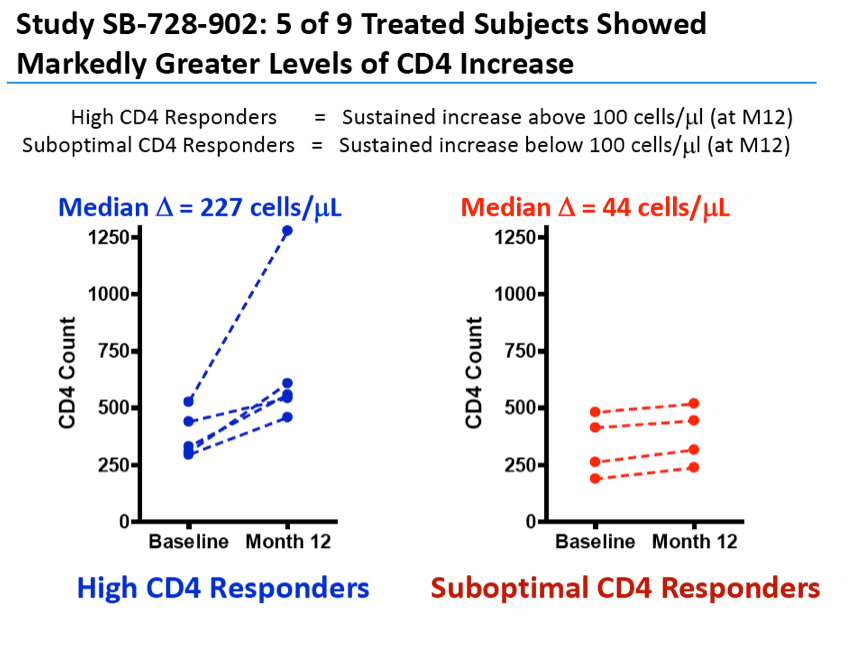
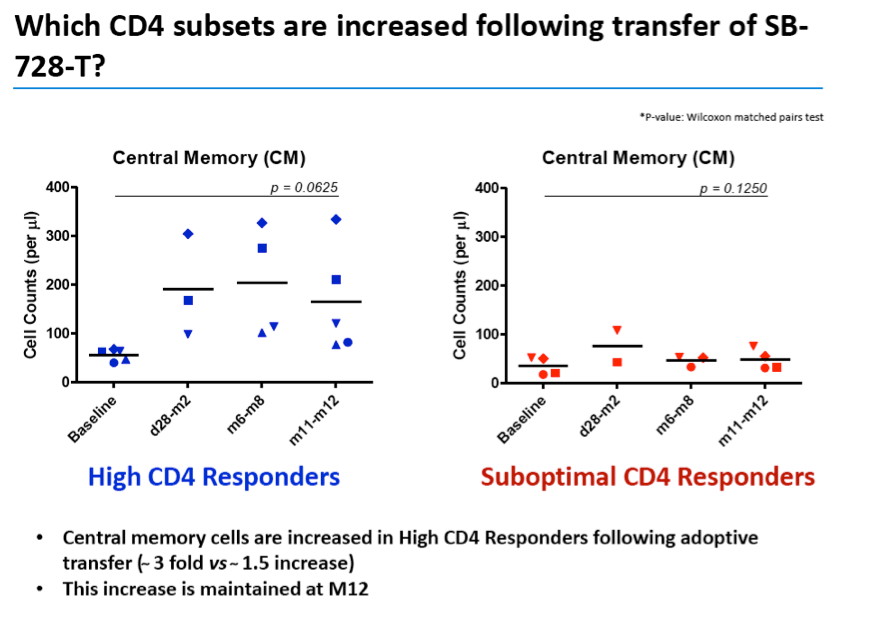
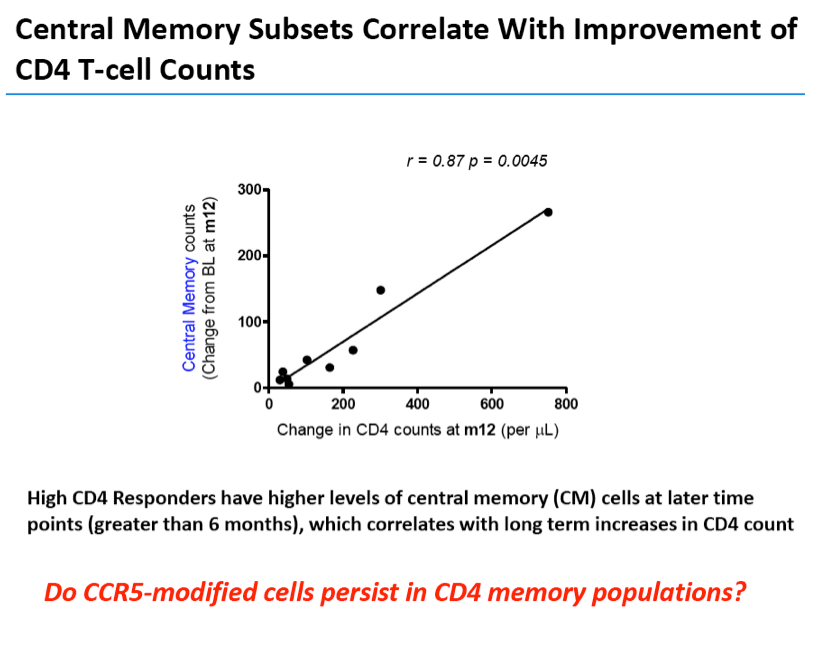
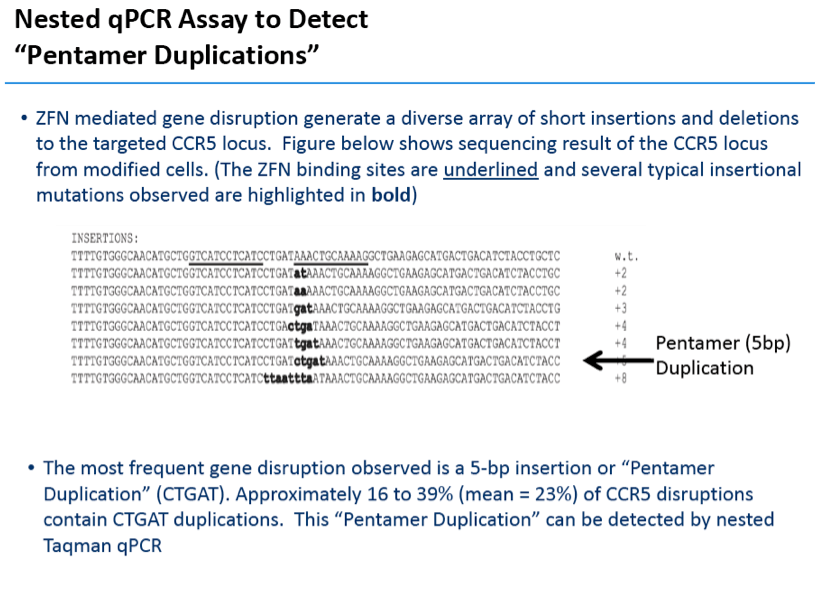
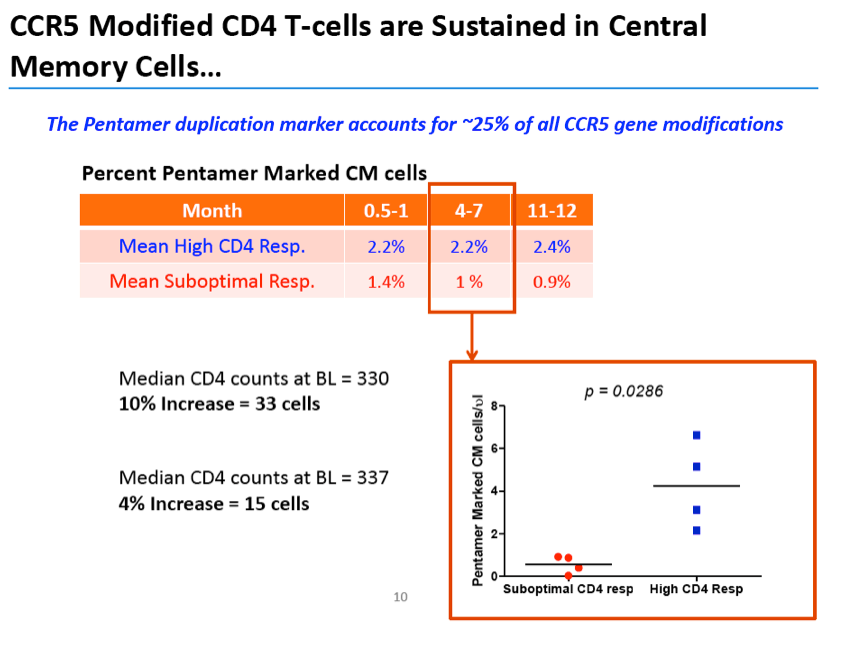
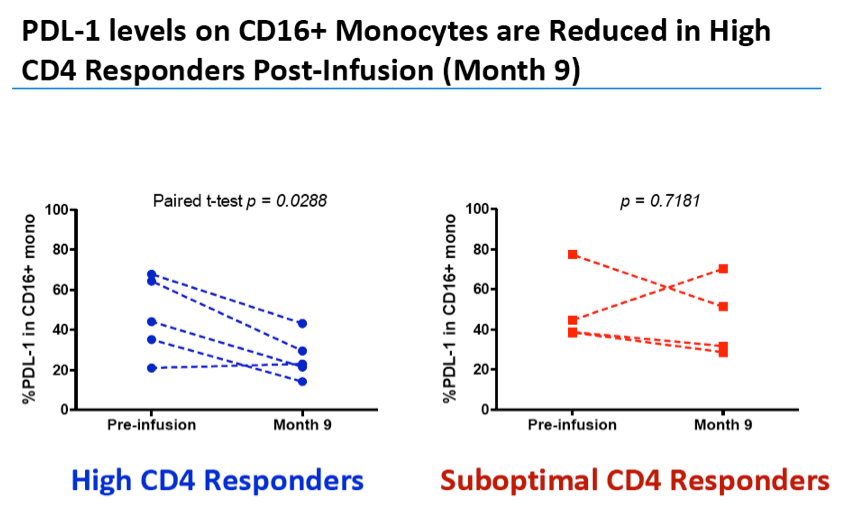
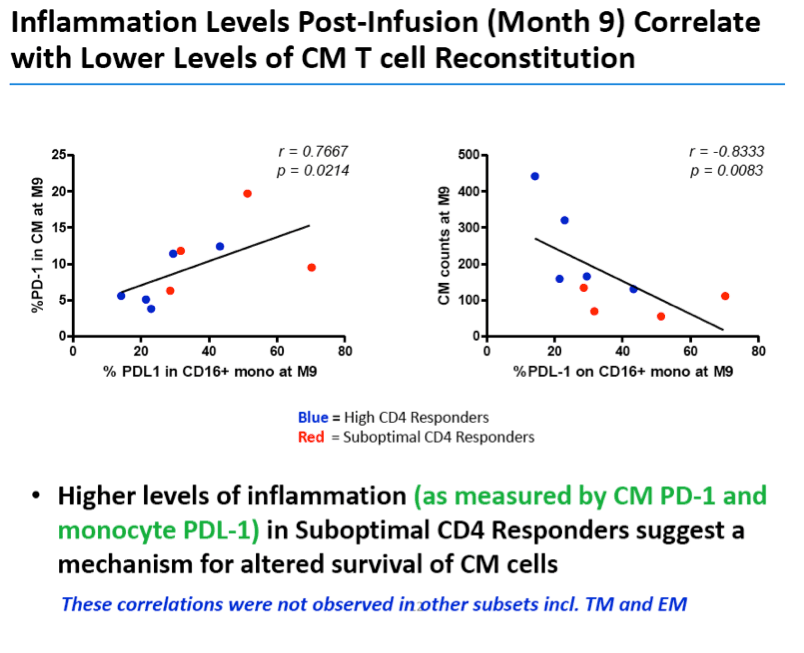
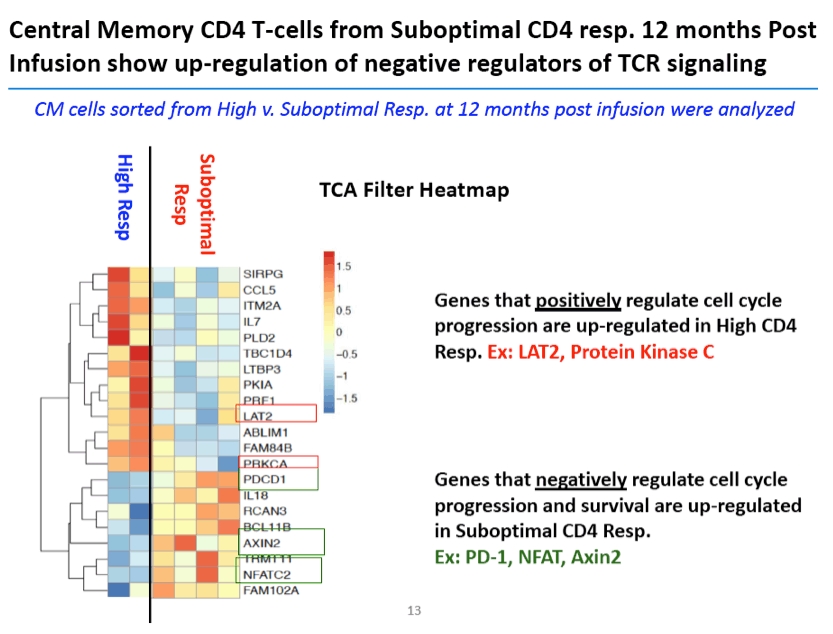
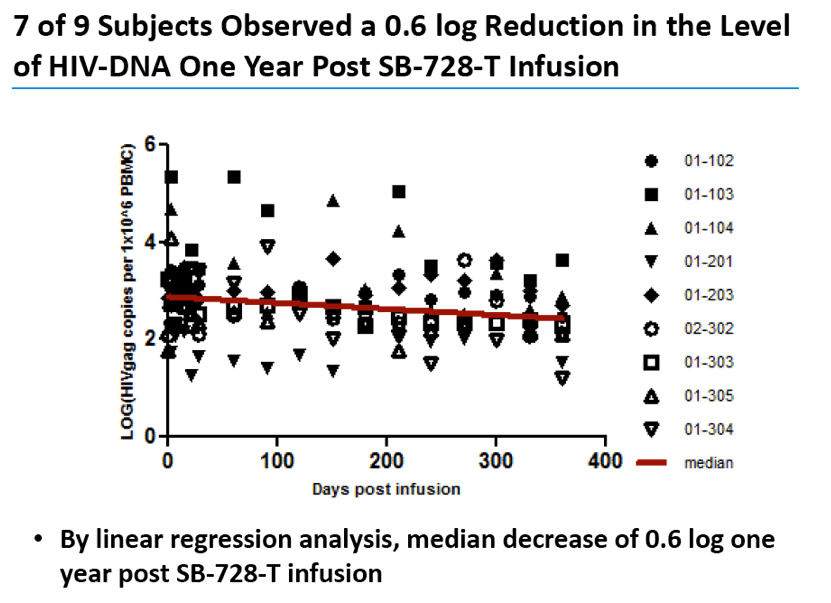
|
| |
|
 |
 |
|
|